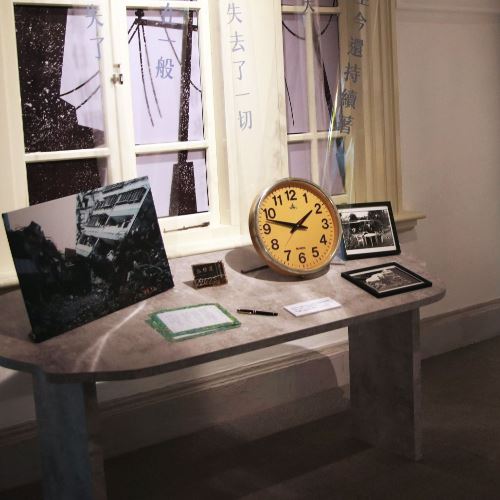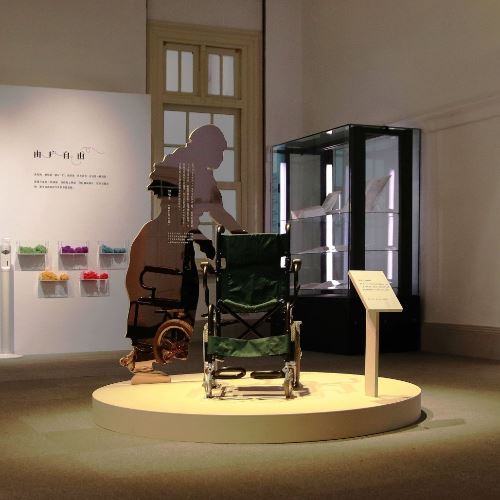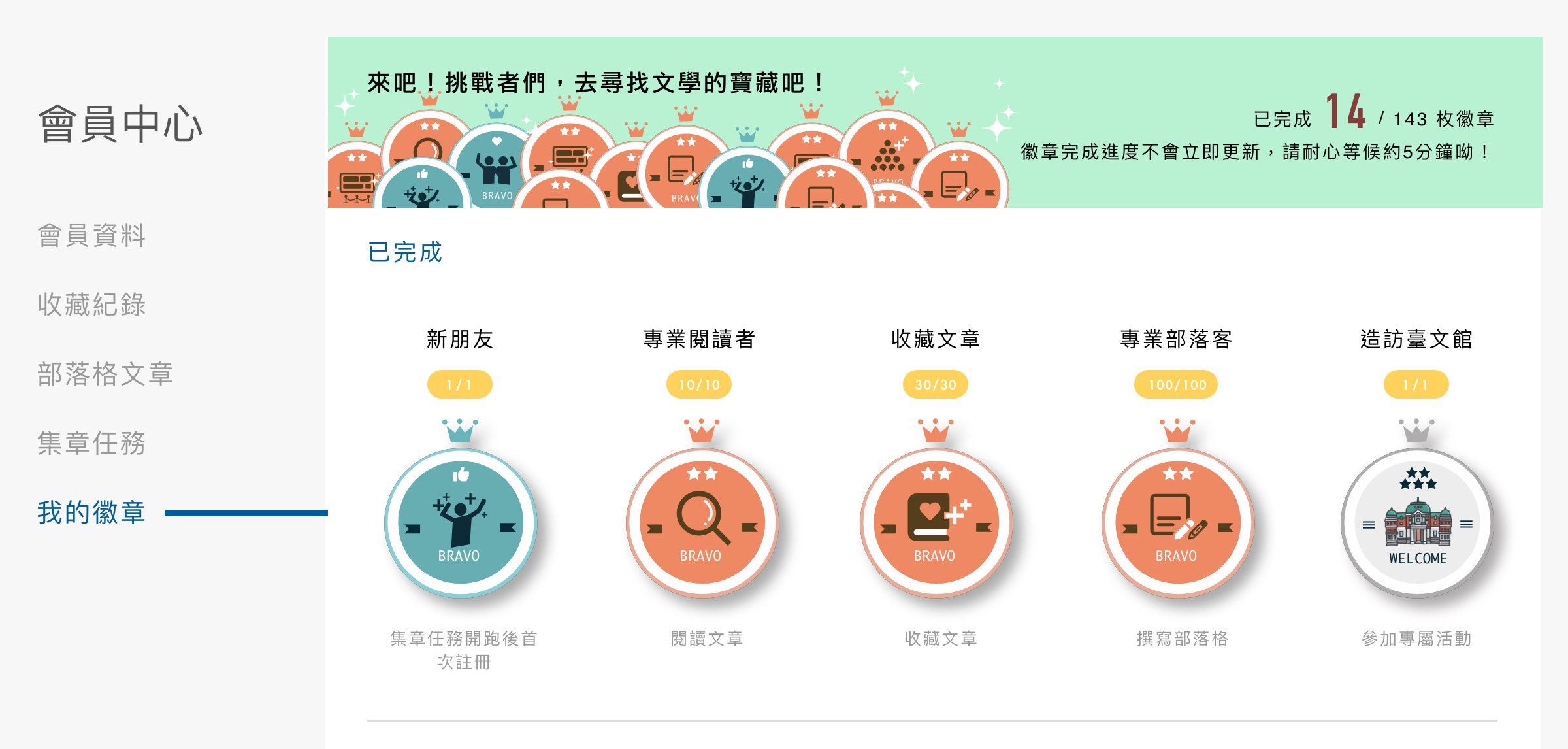►Navigating Life between Illness and Recovery ►Staying Safe in a Deluge
►The Slow, Steady, Unwavering Path Forward

Some diseases reflect certain lifestyles. They are the results of repetitive actions and gradual deterioration. These diseases are difficult to be thoroughly eradicated and can only be controlled. A clinic becomes a routine destination every month. Data on health check-ups become numbers that we need to be concerned about. Though treatment can help control diseases and help patients maintain their basic quality of life, long-term treatment exhausts the mind and body and leads to financial stress, causing patients tremendous pain.
Literature illustrates the process from feeling anxious, and painfully struggling, to finally accepting. Words become the best companion for patients to deal with their diseases. In the meantime, uncertainties await patients with chronic diseases like cancer. Thus, when patients are feeling helpless, some of them write down the process of their struggles, while others share the changes in their thinking after being sick. Either way, literature keeps them company.
Navigating Life between Illness and Recovery
"This is perhaps the best treatment. However, ever since my life changed, the ambiance has become quite insipid. It also has got chillier since autumn arrived, making my spirit constantly low. With such despondency, desolation, and boredom, I probably should go out."
This is a passage written by Wu Xin-jung in his journal entry on October 14, 1961. Working as a doctor, he was diagnosed with cardiomegaly. After writing down the amount of medications he was taking, he made this remark.
Chronic diseases refer to long-term, continuous diseases or diseases which cause different symptoms over time. With advanced medical care and prolonged average life expectancy in Taiwan, the number of patients with chronic diseases has been increasing throughout the years. Chronic diseases result in drastic changes in a person's regular lifestyle; his/her diet also needs to be adjusted accordingly. "Controlling the disease" becomes the main task of life for a patient.
Literature soothes the anxiety and frustration brought by chronic diseases, allowing patients to keep records of their journeys of living with their diseases. They delicately describe the interactions between "medical care-family-life" as well as "doctor-patient-companion." Literature reveals patients' positivity and negativity as well as their realization and tenacity when experiencing endless symptoms.
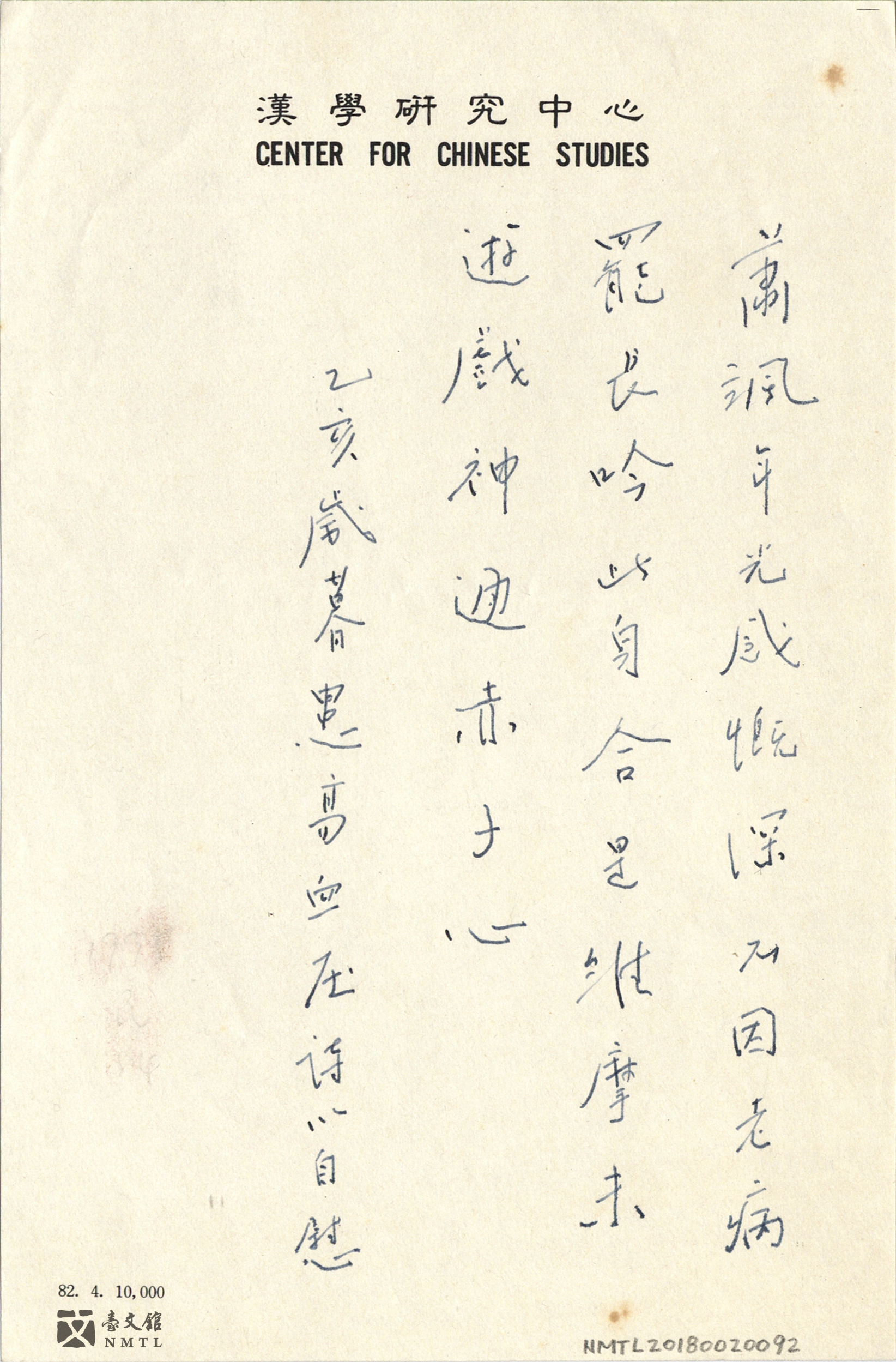
✺ "Poem on High Blood Pressure to Comfort Oneself at The End of Year Yihai"
Yao Yi-wei (1922-1997) suffered from high blood pressure in his old age. He wrote down poems to lament life at an old age to comfort himself.(Donated by Yao Hai-hsing/ Kept in National Museum of Taiwan Literature)
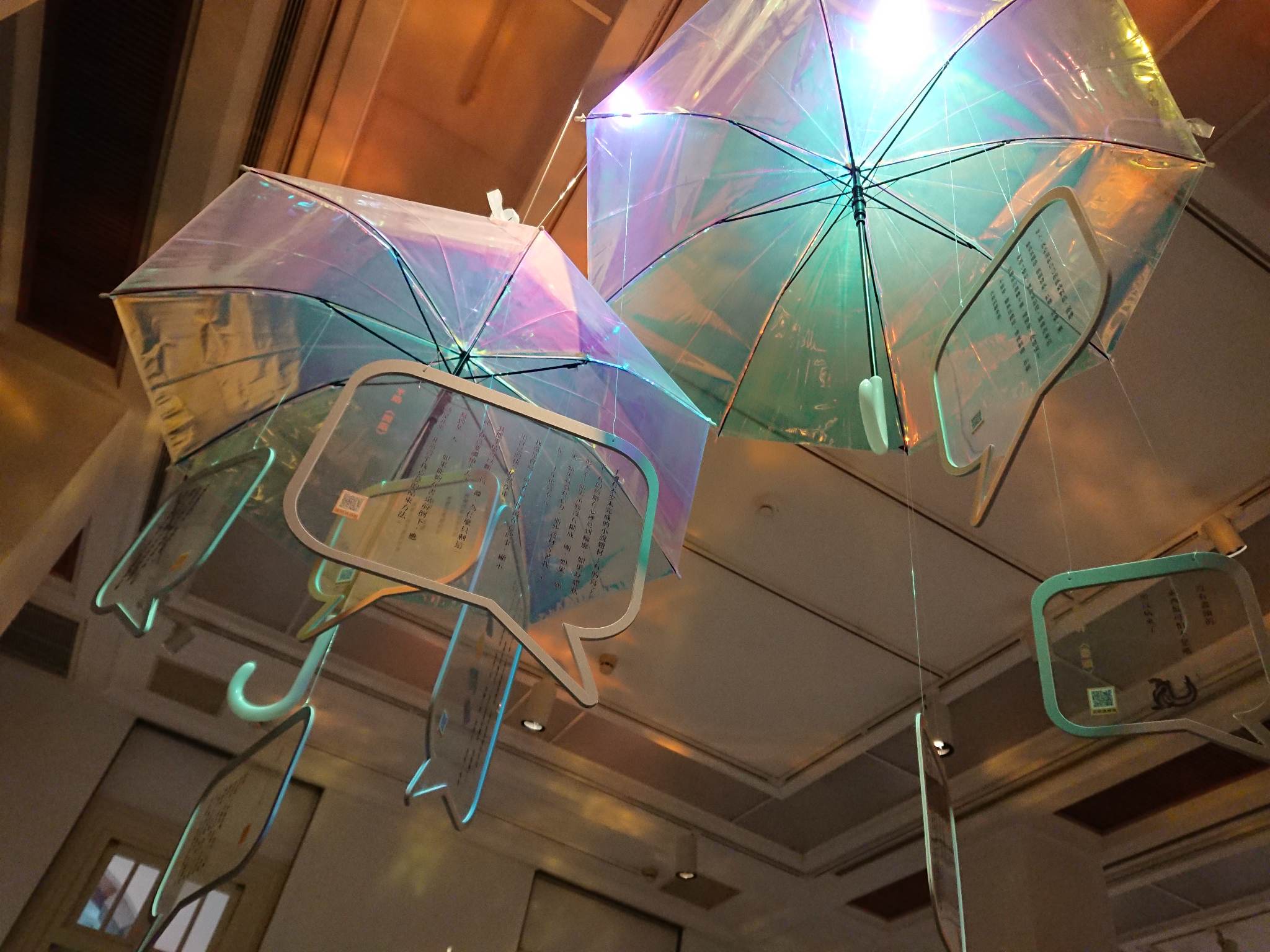
Staying Safe in a Deluge
Among the ten leading causes of death in Taiwan, cancer has long ranked first. It is like tuberculosis in the earlier days. When most people hear about cancer, they equate it with incurable deadly diseases, leading to all types of metaphors and imagination.
As there is more understanding of cancer, more improved treatment methods have also become available. However, cancer treatments are long-term battles for patients. Not only do they have to suffer from side effects caused by the treatments, but they also have to live with anxiety and loneliness of the illness. For many of them, despite their family members being there with them, they still need to take on the challenges all by themselves.
Literature becomes a patient's confidant. Through literature, patients reveal the ruthlessness of their illnesses and the process of their struggles. The darkness of being ill may appear in their literary writings from time to time. However, the writer's courage gives strength to the reader. Being brave and anxious are both honest ways of dealing with cancer.
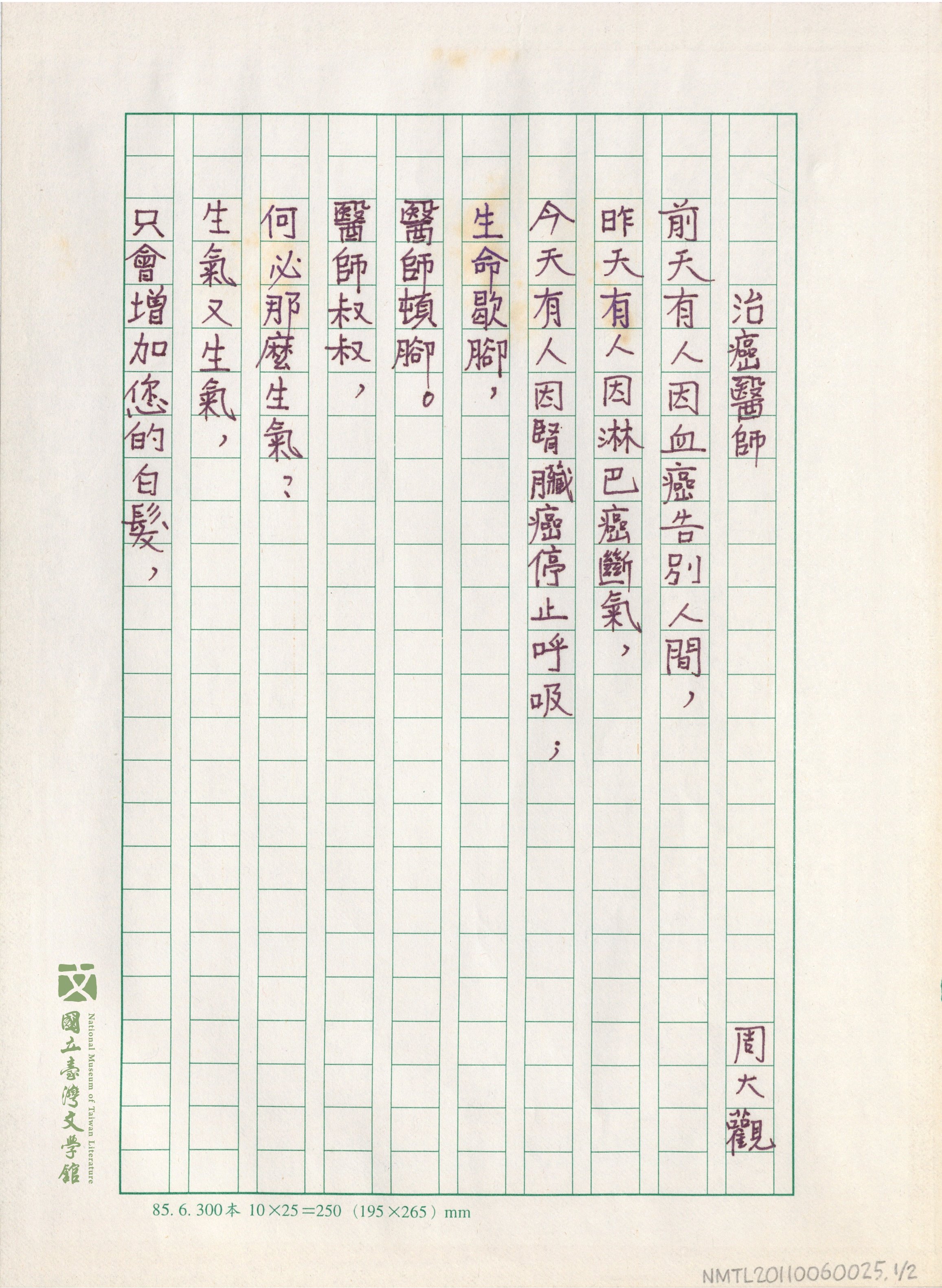
✺ "The Oncologist"
In this work, Chou Ta-kuan (1987-1997) depicts the hospital ward from an observer's viewpoint. He describes how every day different cancer patients pass away, making the oncologists angry; his own father is also often angry because of this, implying that his conditions are deteriorating.(Donated by Chou Ta-kuan Cultural & Educational Foundation/ Kept in National Museum of Taiwan Literature)
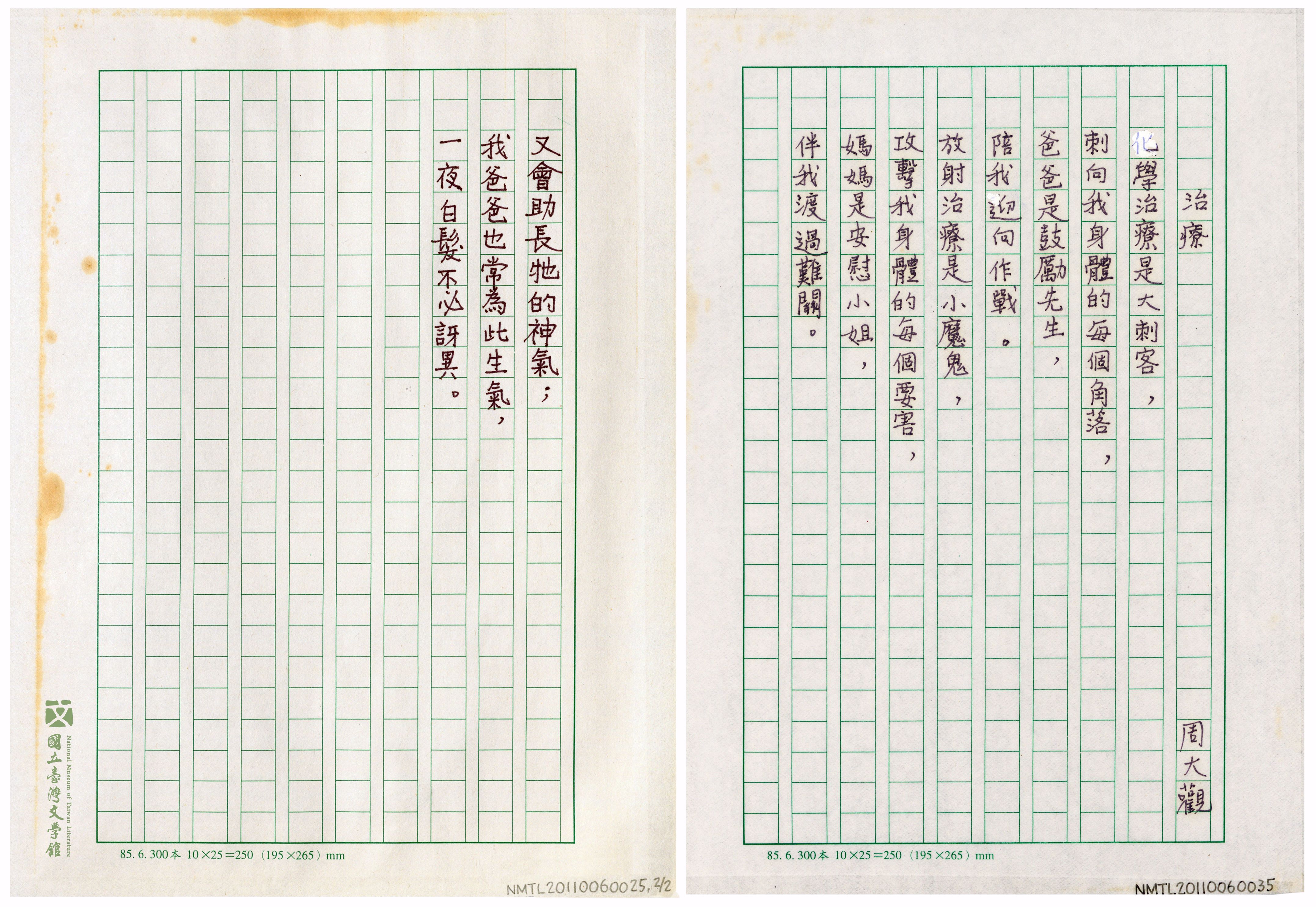
✺ "Treatment"
Chou Ta-kuan (1987-1997) was diagnosed with rhabdomyosarcoma at the age of 10. He went through two surgeries and multiple chemotherapy sessions. This article uses "treatment" as the theme, likening chemotherapy and radiation therapy to assassins and demons. The love of accompanying parents helps fight against the pain brought by "treatment."(Donated by Chou Ta-kuan Cultural & Educational Foundation/ Kept in National Museum of Taiwan Literature)
The Slow, Steady, Unwavering Path Forward
Literature becomes the strongest support for patients by accompanying them forward and propelling the stagnated time. Chronic diseases and cancer are not diseases that can be "cured" within a short time. Different treatment methods are needed so that the diseases would not get worse. As time seems to halt due to sickness or injuries, literature becomes the best way of recording one's medical history. Literature allows patients to reflect on the past as they get better and remind them of the things they should cherish.
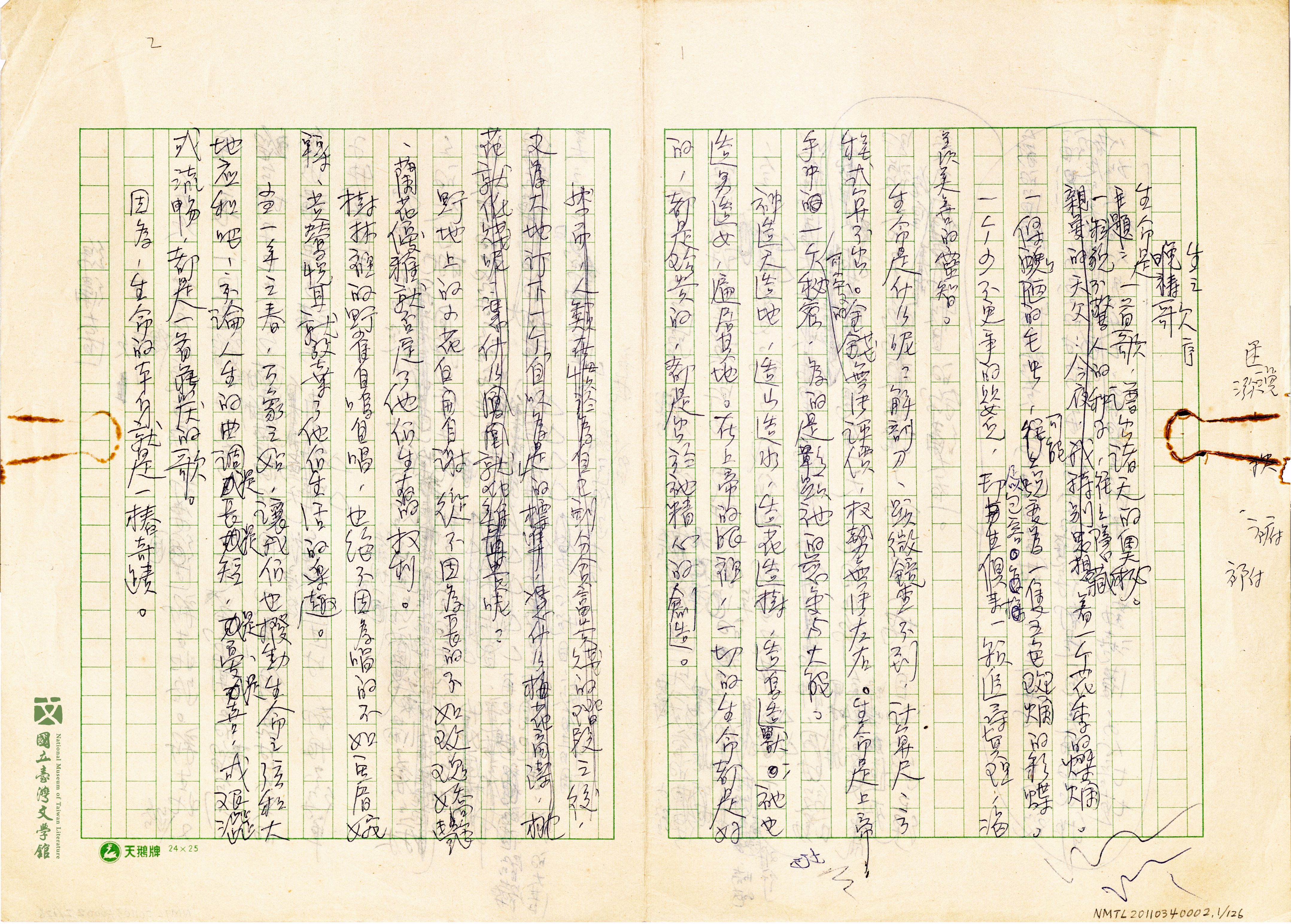
✺ SONG OF LIFE
Liu Hsia (1942-2003), also known by her pen name Hsinglintzu, wrote down her thoughts after being faced with challenges in life. Her books often involve Christianity. In her writings, she prays to God constantly and through the stories in the Bible, she gains new realization about her life. Apart from her own struggles, she also conveys her strength and optimism to others.(Donated by Tang Mien/ Kept in National Museum of Taiwan Literature)
`

✺ XING LIN ESSAYS
In XING LIN ESSAYS, Liu Hsia ((1942-2003; pen name: Xing Lin-zi) depicts her battle with rheumatoid arthritis and the medical treatments. This draft shows the determination with which Liu Hsia continued to write even though she had difficulty moving her hands.Through the little details in life, she writes about her battle with the illness and encourages others.(Donated by Tang Mien/ Kept in National Museum of Taiwan Literature)
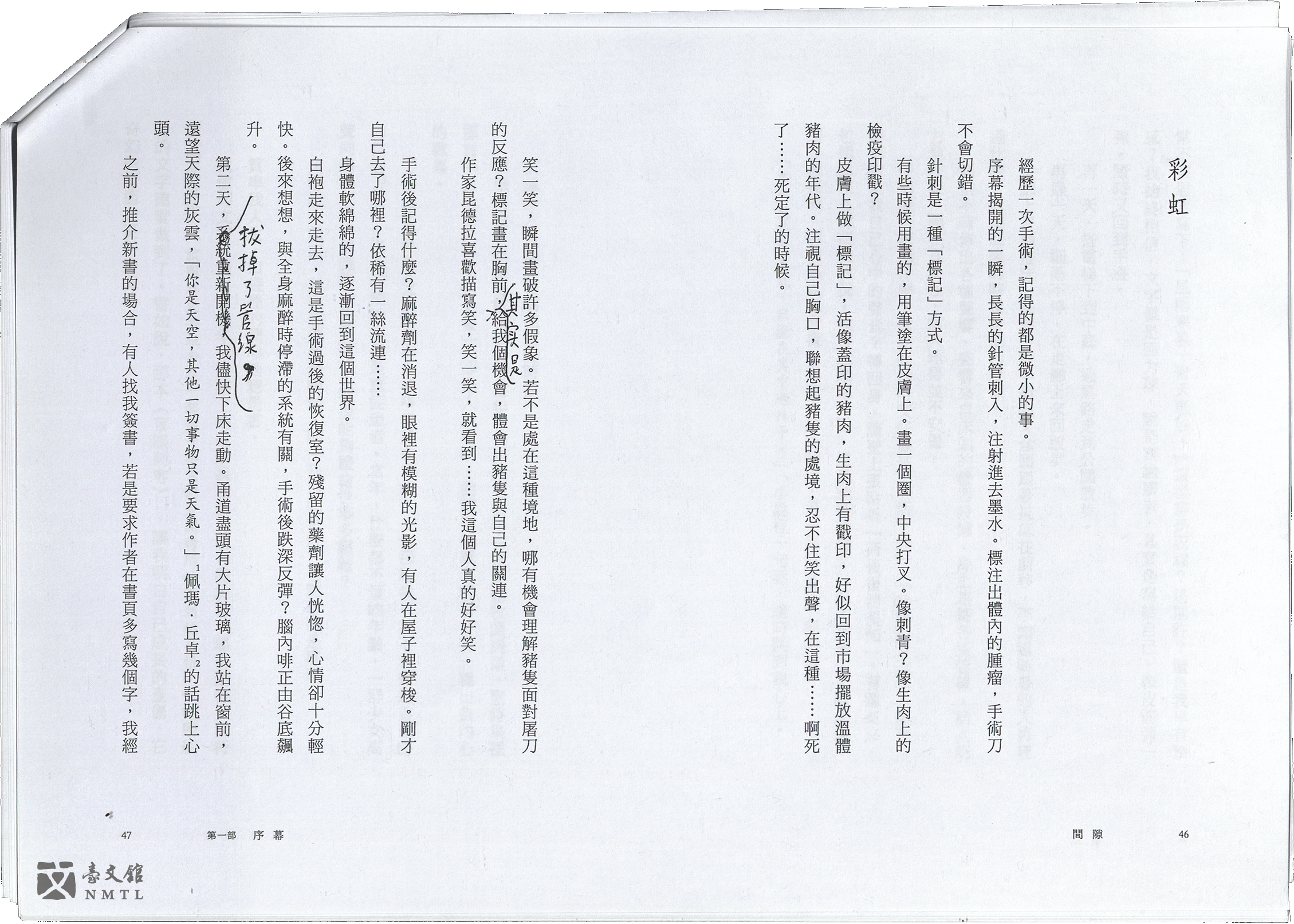
✺ Proofreading draft of GAP
After Ping Lu (1953-) was diagnosed with cancer, she wrote down her thoughts about her life and introspection. This is the final proofreading draft of GAP before it was published, showing the author's meticulous attention to words.(Donated by Ping Lu/ Kept in National Museum of Taiwan Literature)
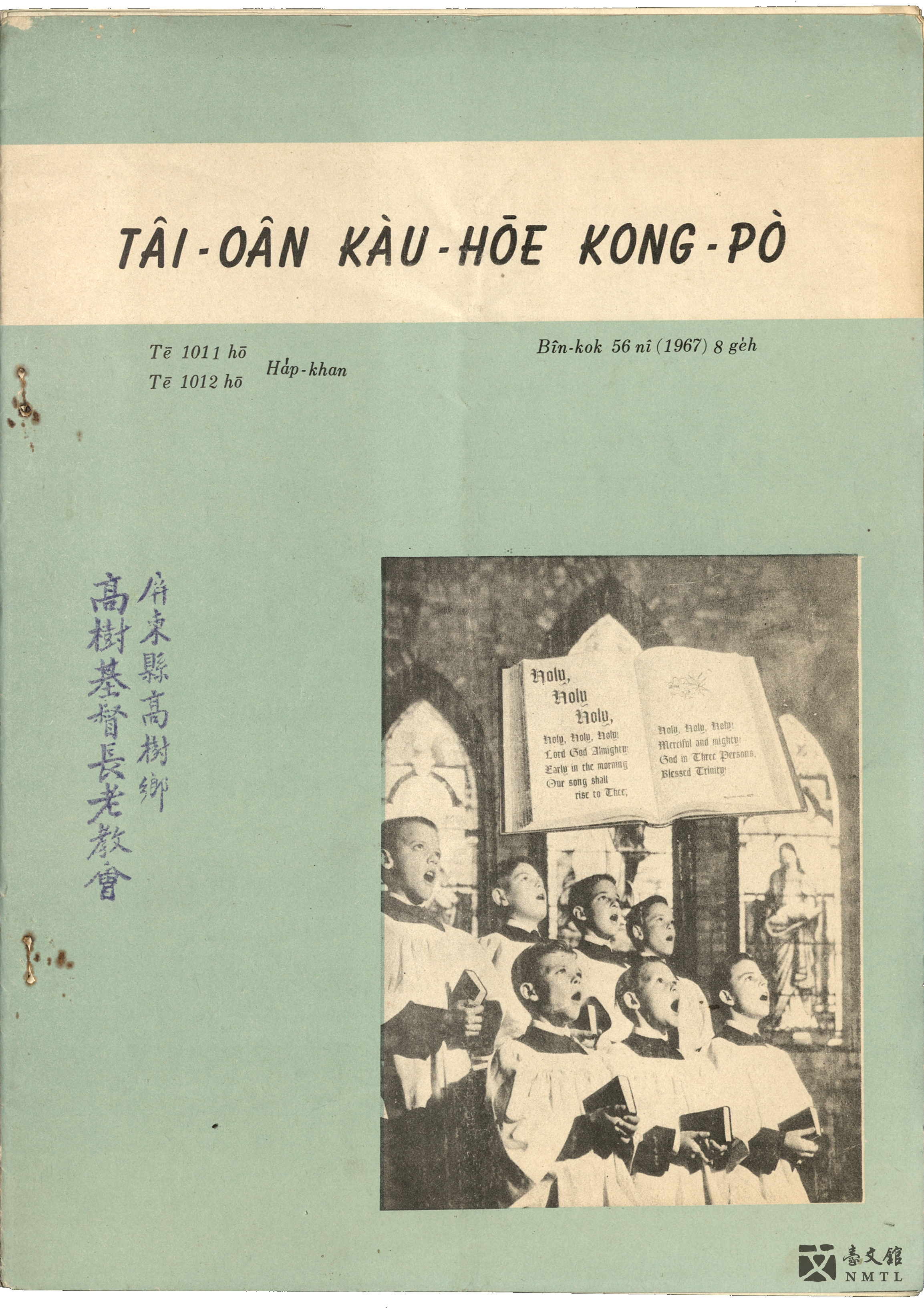
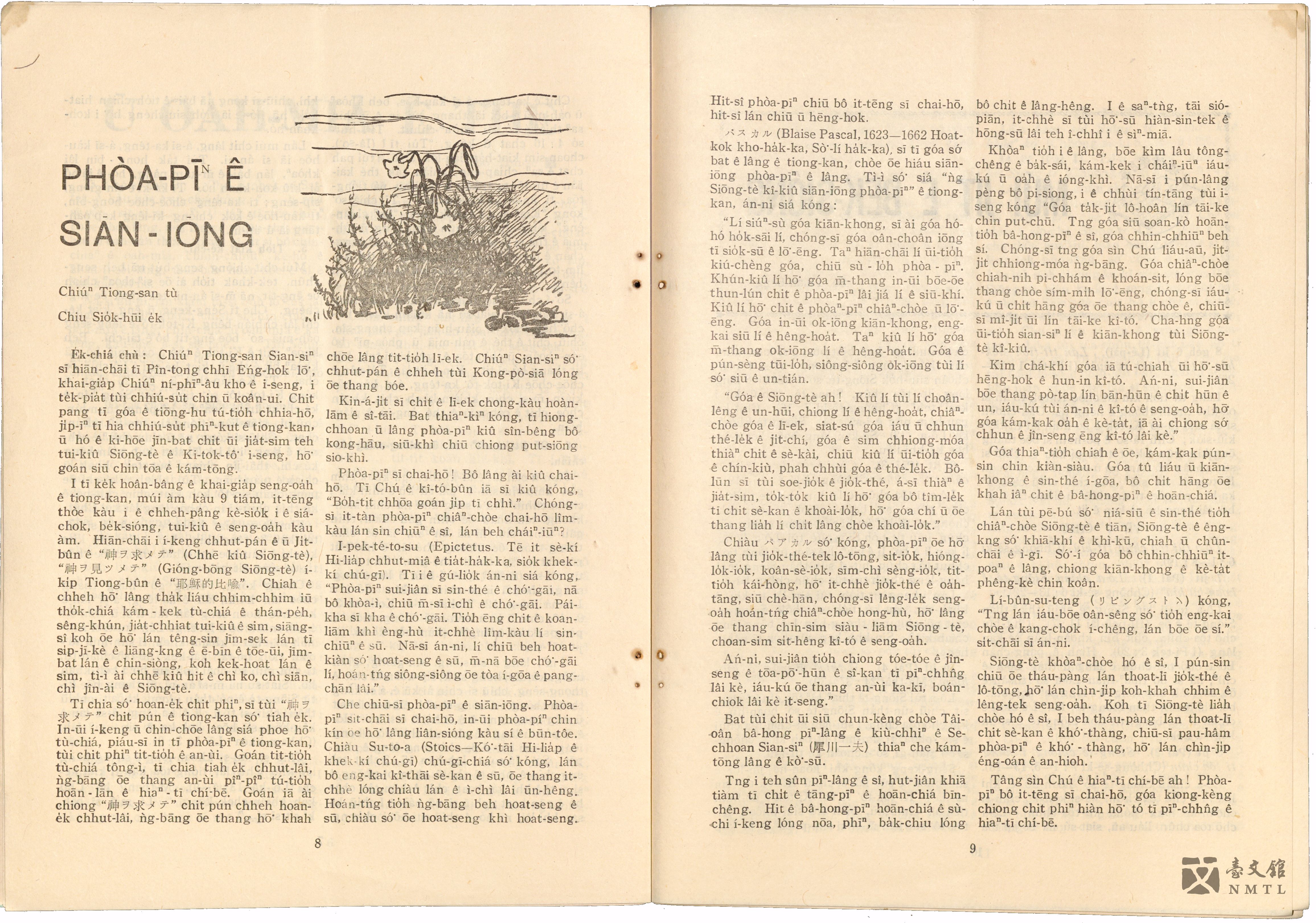
✺ TAIWAN CHURCH NEWSNo. 1011 and 1012 Joint Issue
In "Phòa-pī ê siān-iōng (Making Good Use of Sickness)," Jiang Zhong-shan explains that many people see sickness as a disaster. However, as long as we think about sickness from a different perspective, it will no longer be an obstacle; instead, it might help us in some unexpected way.(Donated by Taiwan Pe̍h-ōe-jī Literature Collection Project/ Kept in National Museum of Taiwan Literature)
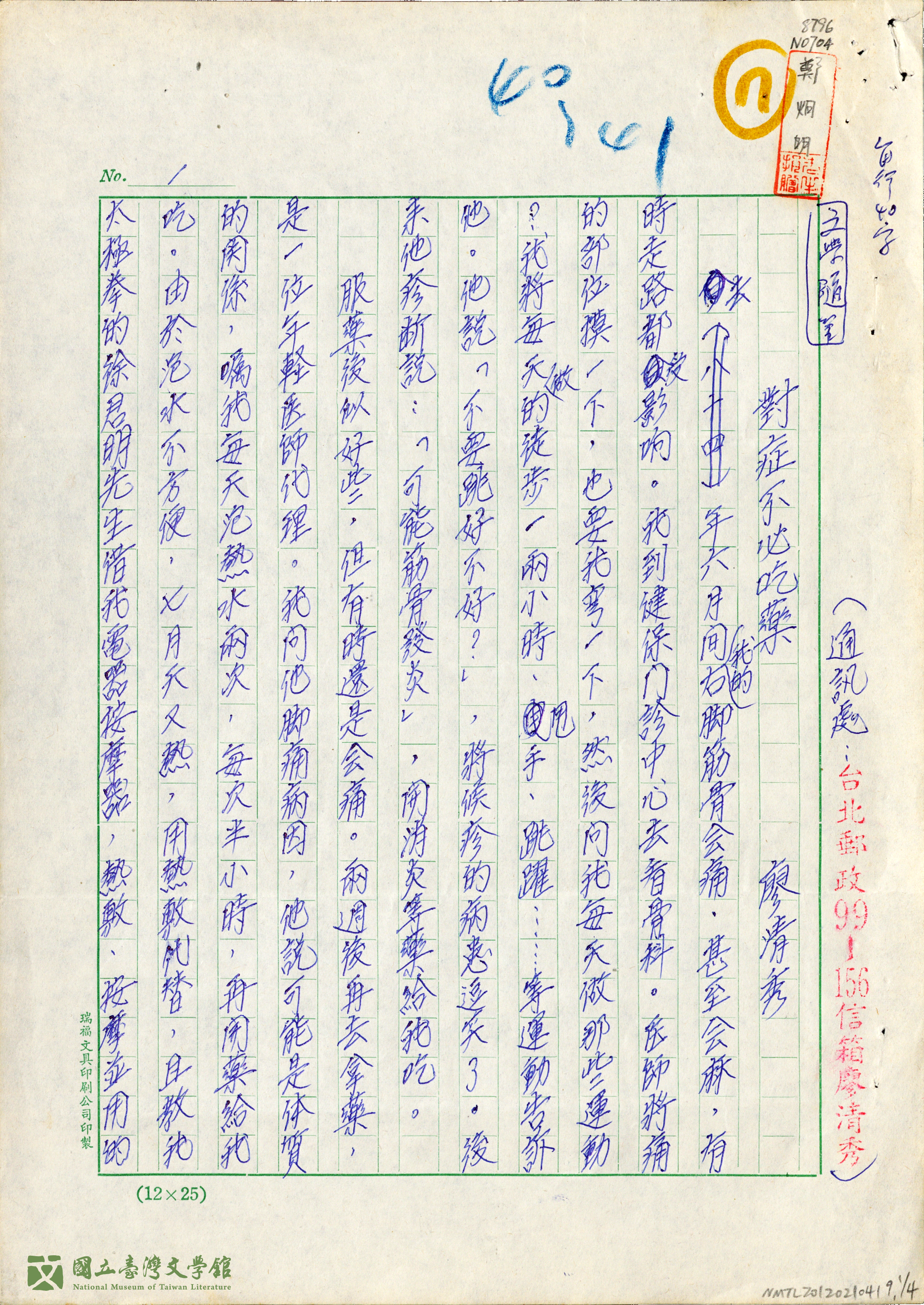
✺ "Appropriate Treatment Requires No Medicine"
Liao Ching-hsiu (1927-2015) wrote down the treatment of her right foot joint inflammation. When she visited the orthopedic clinic, different doctors had different opinions about her problem. As she fought against the pain, she realized: when treating a disease, appropriate methods should be used; sometimes, a disease can be cured without medicine.(Donated by Literary Taiwan Magazine Publisher/ Kept in National Museum of Taiwan Literature)


